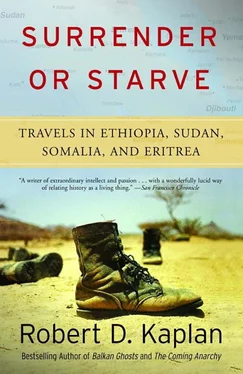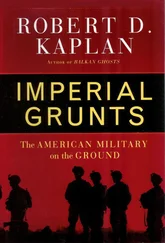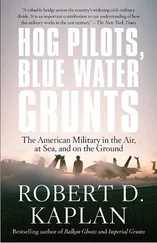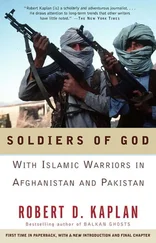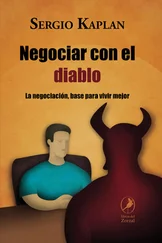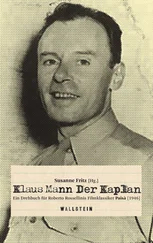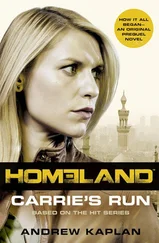The Eritrean guerrilla struggle began in the 1960s as very much a Moslem-oriented affair. Tom J. Farer, in War Clouds on the Horn of Africa: The Widening Storm, wrote:
Its launching was facilitated by the 1950s recession-bred migration from Asmara and the port cities to Saudi Arabia and the Sudan. The workers, plus young [Eritrean] Muslims who went to Cairo for a university education, formed a pool of latent militants who could be organized beyond the Emperor’s reach. A second early asset was the 1962 eruption of civil war in the Yemen. Weapons from patrons poured into and overflowed the arsenals of the Yemeni belligerents. Some of these weapons filtered into the hands of the ELF.
Not surprisingly, the ELF’s early supporters included the likes of Syria and the leftist Egyptian regime of Gamal Abdel Nasser. The domination of the ELF by Moslems and outside Arab radicals was a dubious, rather artificial arrangement. The orthodox Coptic Christian highlanders, who always accounted for about half of Eritrea’s population, felt immediately estranged. As Farer suggested, after Israel’s dramatic success in the 1967 Six Day War, the ELF’s Arab patrons became more than ever preoccupied with their own problems and consequently lost interest in peripheral areas such as Eritrea. But with the 1969 coups in Sudan and Libya, which brought two radical regimes to power that supported the ELF, the organization got a new lease on life. The spate of ELF hijackings of Ethiopian Airlines planes constituted the beginning of Muammar Gaddafi’s career as the Daddy War-bucks of terrorism. Like all radical organizations, the ELF soon divided into factions, with rival bands aligning themselves in the usual places—Baghdad and Damascus. By this time, of course, the Soviet Union, Cuba, and other Eastern bloc nations had signed on by helping the ELF in order to win prestige in the Arab-Islamic world and to help destabilize the pro-U.S. emperor in Addis Ababa.
However, radicalism did not cause the ELF’s eventual decline. The ELF’s Arab-Islamic outlook did because Eritrea was not Arab and was only partly Islamic. The population of four million was equally split between the Tigrinya-speaking Christians of the highlands and the Tigre-speaking Moslems of the coast and western plains. (Tigrinya and Tigre are closely related Semitic languages, but are almost mutually unintelligible. The language of Tigre should not be confused with the province of Tigre, where Tigrinya is spoken.) Welding these two population groups together psychologically—at which the Italians inadvertently succeeded—was not an easy task. Rather than build on this unity, the ELF, with its Arab cohorts, almost destroyed it.
The EPLF was formed in 1970. It had a strong Christian element, and, as its name implies, had a distinctly Marxist tinge at the beginning. Isaias Afewerki, a Christian, commanded the EPLF field forces, while foreign relations were in the hands of Osman Salih Sabbe, a Moslem renegade from the original ELF, whose job it was to keep money flowing in from Arab capitals. Nonetheless, a civil war motivated by religious animosities broke out between the ELF and the EPLF in 1972; six thousand men were killed in this struggle waged in the shadows of the greater EthiopianEritrean conflict. By the time the civil war ended in 1975 with no clear-cut victor, Emperor Haile Selassie had been deposed in a coup in Addis Ababa, and a new government, headed by the Dergue, had come to power. The Dergue’s initial egalitarian posture and talk of “reform” had raised hopes that the new government would seek to end the bloodshed in the north by compromising with the Eritrean resistance. These expectations were dashed on Bloody Saturday, November 23, 1974, when General Aman Michael Andom, an “Ethiopianized” Eritrean who had been negotiating with the Eritrean guerrillas on the Dergue’s behalf, was ordered killed by Mengistu in Andom’s Asmara villa precisely because he was believed to be close to achieving a historic peace settlement.
The effects of Andom’s death were quick and devastating. Whole units of locally recruited government police in Eritrea deserted to the guerrillas. Students returned to their villages to join the ELF and the EPLF. As Farer revealed, “Having at last converted the great mass of Eritreans into the enemy, the masters of Addis could now pursue the logic of counterinsurgency to its murderous end.” The same famine that in the mid 1970s had ravaged Wollo and Tigre and sparked the overthrow of the emperor “now tightened its grip on Eritrea.” However, the Dergue did not allow its newly created relief agency to distribute food or foreign donor organizations to work in the area. Farer reported that “the government of Ethiopia tried, with careful premeditation, to orchestrate the starvation of Eritrea’s rural population.” The Dergue was barely a year old and had only just begun to emerge from the obscurity of the barracks, but already famine had become one of its main tools against a recalcitrant ethnic group: a fact that the world would still find difficult to accept a decade later when the same tactic was used again by the same government against the same group.
The drought and internal divisions notwithstanding, the dramatic, almost overnight growth of the Eritrean guerrilla movement following Andom’s death led to the encirclement of Dergue troops in the main towns of Eritrea. Arab and Eastern bloc aid to Eritrea poured in, while the Soviet Union, assisted by Cuba, continued its blackmail of the Dergue by arming the Eritreans in order to get Mengistu to completely sever his links with the United States. The famine, the demise of Haile Selassie, and the possibility of an age-old empire splitting asunder attracted the world media to the Horn of Africa. Eritrea, in 1976, was suddenly a front-page news story.
In a last ditch effort to save its skin, the Dergue conscripted forty thousand Christian peasants in May 1976 for an assault on Eritrean guerrilla positions. The peasants were told they would be fighting “a holy crusade against the Arab infidels.” But the new army was cut down by the guerrillas before it had the chance to attack. Jon Swain, the correspondent for the London Sunday Times, wrote:
As the bombs and bullets fell among them, the peasants rose in an angry swarm and taking up their weapons—for many only staves— swept forward shouting as they ran. Waves of them fell before they could discharge their guns. The remnants turned and ran away. But they were trapped between the guerrilla lines and the Ethiopian army, which… now opened fire in a callous attempt to drive the rabble forward. …By four in the afternoon the plain was still. “You could not see the ground. You could only see dead bodies,” was how one who participated described the scene.
On the heels of this disaster came the most successful Eritrean offensive in the history of the war. The ELF and the EPLF, each able to field roughly sixteen thousand soldiers, together rolled up the countryside. Nakfa, the district capital of Sahel in the north, was captured by the EPLF, who have held it ever since. The Dergue was driven out of every main town except Asmara and the ports of Massawa and Assab. The road linking Asmara and Massawa was blocked, Asmara was under siege, and street battles raged in Massawa. Between 80 and 90 percent of Eritrea was in guerrilla hands in late 1977. The Dergue was on its knees, not only in Eritrea, but in the southeast of the country as well, where the Somali army was seventy-five miles inside Ethiopia on the road to Harar and Addis Ababa. The empire, forged at Axum in the century of Christ, was about to crumble. Then the Soviets rewrote the script by turning their guns on their former Eritrean allies.
In the midst of the guerrilla offensive, the incoming Carter administration had suspended all military aid to the Dergue because of its poor human rights record. Mengistu thus had nowhere to go except Moscow; because the USSR had armed the Eritreans in the first place, the Kremlin held the key to the war’s outcome. “In Ethiopia, the Soviets created opportunities for themselves by causing the problems,” observed Alan L. Keyes, a former assistant secretary of state for international organizations. Mengistu arrived in Moscow in May 1977 for a week-long state visit. Soviet arms began arriving in large quantities in Ethiopia later in the year, along with the same Cuban advisers who had been assisting the Eritreans. The obvious ensued: the guerrilla offensive ground to a halt. Soviet navy shelling from offshore battleships prevented the EPLF from taking Massawa. By May of the next year, the Dergue had accumulated enough new weaponry to launch an offensive of its own. The Cubans ran the logistical backup. Throughout late 1978 and into 1979, war swept across the Eritrean landscape. Thousands of civilians were killed, crops were burned, and tens of thousands were forced across the Sudanese border into refugee camps that still exist. Nerve gas and antipersonnel bombs disguised as children’s toys reportedly were used. This was a form of warfare that the world would come to know better in coming months when the Soviet army invaded Afghanistan.
Читать дальше
